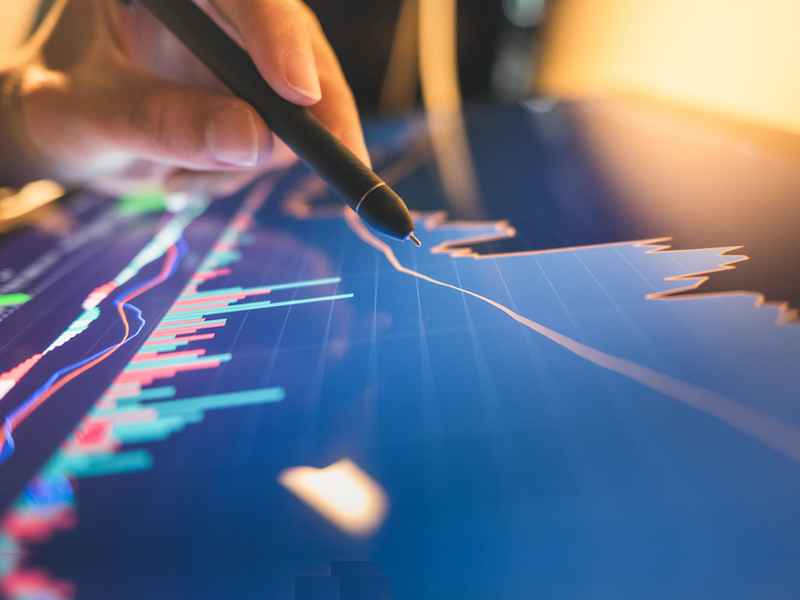
Once a year, the FTSE Russell index undergoes a refresh.
Every fourth Friday in June, the global index provider reconstitutes its benchmark indexes to reflect the ever-changing U.S. equity market. The rebalancing of the Russell 1000, 2000, 3000 and other indexes impacts the hundreds of stocks that are added, removed or shifted in weight.
The annual event typically results in one of the busiest trading days of the year. This year, on June 28, the Russell reconstitution led to a cumulative $219.6 billion (all figures in U.S. dollars) being traded across the Nasdaq and New York Stock Exchange by the time the markets closed.
The Russell reconstitution is just one major index reconstitution. S&P Dow Jones Indices rebalances its indexes quarterly after the close of the third Friday in March, June, September and December, while MSCI indexes rebalance on the last business day of February, May, August and November.
Here’s what an index reconstitution means for investors and other important details to keep in mind.
What does an index rebalancing mean?
The securities in an index are periodically revised to ensure the index accurately reflects the market’s current composition and performance.
An index rebalancing implies the market is functioning well, said Vitali Mossounov, vice-president, director and co-lead of public equity research with TD Asset Management.
“If we imagine an index like the S&P 500, there are hundreds and ultimately thousands of passive and active funds, ETFs [and] portfolios that are using it to track the market and using it as a benchmark for performance that they aim to exceed,” he explained.
“So, it’s extremely important that whatever indices we’re looking at, they have to be robust.”
Here’s what’s in and out at Russell and other major indexes
The FTSE Russell indexes include the Russell 1000 index of large-cap stocks and the Russell 2000 index of small-cap stocks. Together, they make up the Russell 3000 index.
There are also style indexes such as the Russell 1000 growth and Russell 2000 value.
During the most recent, 36th annual reconstitution, Microsoft retook the largest company position from Apple. Other notable changes included the addition of Dell Technologies; CRH, a building material company; SharkNinja, a global product design and technology company; and Trump Media, which owns social media platform Truth Social, to the Russell 1000.
The Russell 2000 added 79 companies, with most coming from health care (27 companies) and technology (12), followed by industrials (11), consumer discretionary (eight), financials (six) and energy (five).
Companies that left the Russell indexes include personal genomics and biotechnology company 23&Me Holding Co. and clothing company Guess Inc.
Following the changes, the total market capitalization of the Russell 3000 index increased by 20%, up from $44.2 trillion in 2023 to $53 trillion in 2024, according to LSEG Data & Analytics.
As for the S&P 500, global investment firm KKR & Co. Inc., cybersecurity firm CrowdStrike Holdings Inc. and internet domain registry firm GoDaddy Inc. joined the index on June 24. The companies replaced human resource consulting firm Robert Half Inc., financial services firm Comerica Inc. and biotechnology firm Illumina Inc.
Changes to the S&P 500 index are made quarterly as well as on an ongoing, as-needed basis to maintain its 500 company count and ensure it continues to meet its stated objective of measuring the performance of the large cap segment of the U.S. equities market.
And on June 3, 187 securities were added and 326 securities were removed from the MSCI ACWI Investable Market Index, MSCI’s flagship global equity index.
What do investors need to know?
Given the shift toward passive investing, investors should pay attention to index rebalances, said Mike Archibald, vice-president and portfolio manager with Toronto-based AGF Investments Inc.
More money and demand tend to chase securities that are added to an index after a reconstitution, while deleted securities experience the opposite, Archibald said.
“As an institutional investor, as a professional investor, [a rebalancing] always allows you to look at the names that maybe you lost touch with that are being added in the index,” he said.
“Or if there are names that are being deleted, it allows you to sharpen your pencil and, say, ‘OK, is my investment thesis really appropriate?’”
Archibald noted that there is a so-called measurement period during which index providers determine which stocks will probably be added to or deleted from indexes. Changes are generally announced two weeks before taking effect.
This gives investment professionals an opportunity to prepare for the actual reconstitution, he added.
Mossounov said index reconstitutions “are important for the health of the market, but for long-term-oriented investors, we should also be clear that these aren’t events that we should be overly paying attention to.”
Investment professionals who are more in the weeds of equity markets, on the other hand, may try to anticipate the securities they believe will meet the criteria for inclusion in an index.
“When all is said and done, it’s just a process that works, that we don’t really need to think about,” Mossounov added.
“It doesn’t clearly have implications on returns, other than keeping the market healthy and letting us participate in whatever the index intends to do, which is typically giving us the best companies according to the criteria that was set.”